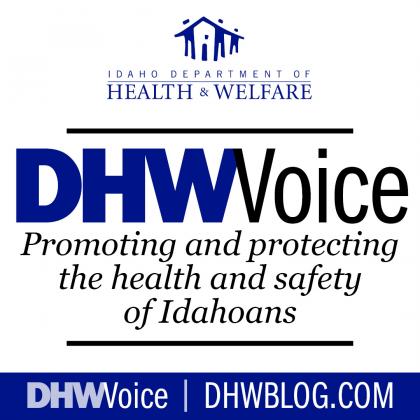The Idaho Behavioral Health Council (IBHC) is working toward a future where adults, children, and their families who live with mental illness and addiction receive the behavioral health care services they need when they need them. This will help to make sure they have a better quality of life, less chance of getting involved with the criminal justice system, and their communities are healthier and safer places to live.
That is quite a tall order, but as the council’s co-chairperson, I am pleased to be able to say that successful work has begun. (Administrative Director of the Courts Sara Omundson is the other co-chairperson.)
The council selected nine of the 34 recommendations in its strategic action plan as priorities for the next three years, and all nine have been started. Here is more information about a few of those recommendations. You can see more details about the status of all nine recommendations on the council’s website under the strategic action plan link.
Recommendation: Improve Idaho’s civil commitment process and procedures by proposing amendments to the Mental Health Act to incorporate the action items.
The civil commitment process is what happens when someone is involuntarily committed for mental health treatment because they are a danger to themselves, a danger to others, or they are determined to be gravely disabled because of mental illness. The intent of this initiative is to update the definitions of mental illness including gravely disabled, clarify the roles of the state vs. the counties, and streamline the process.
Legislation was proposed and passed unanimously in both the Idaho House and Senate in the 2022 legislative session.
Recommendation: Develop and implement a comprehensive workforce plan to increase licensed and/or certified behavioral health professionals across the full continuum of service care throughout the lifespan in Idaho.
This recommendation was formed after the IBHC’s Advisory Board and several IBHC workgroups created proposed action items identifying significant workforce needs in Idaho. Health Professional Shortage Areas (HPSA) are federal designations that specify geographic areas or populations that don’t have enough primary care, dental, or mental health professionals. The entire state of Idaho has a mental health HPSA designation.
The Idaho Department of Health and Welfare published a Behavioral Health Workforce Plan in January 2022, in accordance with this recommendation. The plan outlines a five-point framework to expand the behavioral health workforce in Idaho. The framework includes Promotion, Education, Credentialing, Employment, and Retention. A specific implementation plan will be finalized in July 2022.
Recommendation: Develop and implement a crisis response system model for youth. Strengthen and broaden a crisis response system model for adults based on community capacity.
DHW currently provides behavioral health crisis services across Idaho and intends to enhance the system. Based on best practices, Idaho has identified five core principles of the crisis system and many essential components.
DHW’s core principles for the development of the crisis system are:
- Collaboration with stakeholders
- Centralized organization
- Community-based, competent, and diversified workforce
- Non-coercive practice
- Resolution mindset
DHW has already implemented:
- Regional mobile response teams
- Crisis stabilization centers
- Access to urgent walk-in crisis care
- Crisis collaboratives in each region
- System oversight and management
The essential components of the crisis system that need development include:
- Centralized call center, including implementation of 988 on July 16
- Access to mobile response
- Integrated substance use and medication as treatment solutions
- Inclusion of peers and recovery coaches
- Access to urgent care
Idaho’s behavioral health delivery system will be improved significantly by 2023 through the negotiation of a new Idaho Behavioral Health Plan contract, which will include a crisis system for all Idahoans with a crisis call center, mobile response teams, and crisis stabilization facilities.
Idahoans having a behavioral health crisis often are jailed, hospitalized, or treated in hospital emergency departments because treatment or care to meet their needs is not available. The goals of the crisis system are to address mental health needs at the right time or level of care, avoiding time in jail and the use of hospital emergency departments.
For more information about the Idaho Behavioral Health Council, its strategic plan, and the Implementation Template, visit https://behavioralhealthcouncil.idaho.gov/
This is the third post in a series that focuses on how Idaho is working to improve the behavioral health system so Idahoans can get the care and services they need when they need them. My previous posts are available at https://healthandwelfare.idaho.gov/dhw-voice/dhw-director-dave-jeppesen-gov-littles-leading-idaho-plan-provides-critical-funding and https://healthandwelfare.idaho.gov/dhw-voice/dhw-director-dave-jeppesen-working-improve-behavioral-healthcare-all-idahoans.
I hope you have a safe and healthy weekend.
The Idaho Department of Health and Welfare is dedicated to strengthening the health, safety, and independence of Idahoans. Learn more at healthandwelfare.idaho.gov.


Join the Discussion
Please note the following terms of participation in commenting on the DHW Voice blog.
To ensure a productive discussion you agree to post only comments directly related to this post and to refrain from posting obscenities; threatening, abusive or discriminatory language; sexually explicit material; and other material that would violate the law if published here; promotional content; or private information such as phone numbers or addresses. DHW reserves the right to screen and remove inappropriate comments.